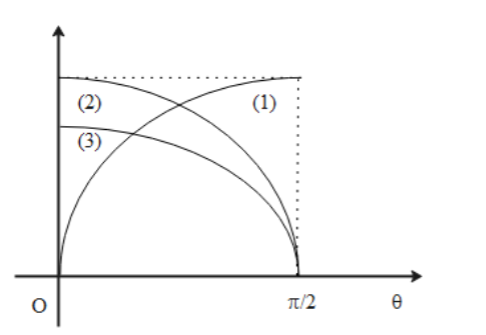Question
Question: A block of mass m is placed on an inclined plane with an angle of inclination \(\theta \). Let N, \(...
A block of mass m is placed on an inclined plane with an angle of inclination θ. Let N, fL, and F represent the normal reaction, limiting force of friction and the net force down the inclined plane respectively. Let μ the coefficient of friction. The dependence of N, FL, and F on θ is indicated by plotting graphs as shown below. Then curve (1), (2), and (3) respectively represent

A. N, F, and fL
B. fL, F, and N
C. F, N and fL
D. fL, N, and F
Solution
There are two conditions for a body one is balanced and another is an unbalanced condition. Under balance conditions, all the forces which are acting on the object influence each other, and the net force becomes zero. On the other hand, when the object is in unbalanced condition one of the forces outstand the other forces and change in the position of the object can be seen.
Complete step-by-step answer :
When an object is placed on an inclined plane the forces faced by the object are given by the free body diagram

From the figure we can say that:
The force normal to the object is equivalent to the cos component of the downward force mg. mathematically,
N=mgcosθ
The value of cosθdecreases with the increase in the value ofθ.
So we can say that N is inversely proportional to θ
N∝θ1
So the plot (2) or (3) will be the plotting of N.
If we look at the value of the limiting force of friction. So, the limiting force of friction is given by:
